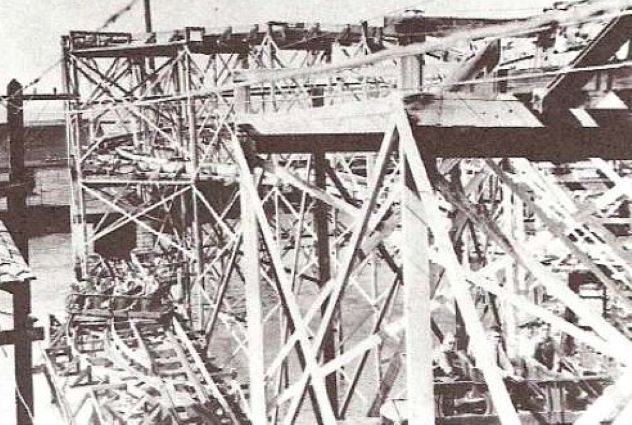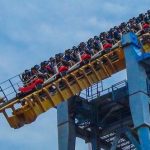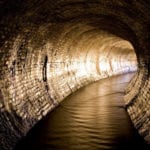 Weird Stuff
Weird Stuff  Weird Stuff
Weird Stuff  Animals
Animals 10 Inspiring Tales of Horses Being Human
 Mysteries
Mysteries Top 10 Haunting Facts About the Ghost Ship MV Alta
 History
History 10 Surprising Stories About the Texas Rangers
 Humans
Humans 10 Philosophers Who Were Driven Mad by Their Own Theories
 Miscellaneous
Miscellaneous 10 Video-Game-Worthy Weapons and Armors from History
 Weird Stuff
Weird Stuff 10 Psychics Who Accurately Predicted Wartime Events
 The Arts
The Arts 10 Pieces of Art Inspired by a Broken Heart
 Health
Health 10 Science Fiction-Sounding New Medical Treatments
 History
History 10 Surprising Facts About the Father of Submarine Warfare
 Weird Stuff
Weird Stuff 10 Times Real Laws Were Based on Bizarre Hypotheticals
 Animals
Animals 10 Inspiring Tales of Horses Being Human
 Mysteries
Mysteries Top 10 Haunting Facts About the Ghost Ship MV Alta
Who's Behind Listverse?

Jamie Frater
Head Editor
Jamie founded Listverse due to an insatiable desire to share fascinating, obscure, and bizarre facts. He has been a guest speaker on numerous national radio and television stations and is a five time published author.
More About Us History
History 10 Surprising Stories About the Texas Rangers
 Humans
Humans 10 Philosophers Who Were Driven Mad by Their Own Theories
 Miscellaneous
Miscellaneous 10 Video-Game-Worthy Weapons and Armors from History
 Weird Stuff
Weird Stuff 10 Psychics Who Accurately Predicted Wartime Events
 The Arts
The Arts 10 Pieces of Art Inspired by a Broken Heart
 Health
Health 10 Science Fiction-Sounding New Medical Treatments
 History
History 10 Surprising Facts About the Father of Submarine Warfare
Ten More Really Weird Coasters from around the World
Roller coasters are still heralded as one of the easiest and safest ways for adrenaline junkies to get their fix. Whether they’re hitting 100+ mph speeds or ascending lift hills higher than 300 ft., it’s very easy to find excitement in these wonders of engineering. However, sometimes it’s too expensive to break the height or speed record, and so, some roller coaster manufacturers rely on being bizarre to sell their models.
In a previous list, ten roller coasters were listed that showcased manufacturers pushing the envelope and creating something truly weird to give its riders a one-of-a-kind experience. But ten is far too small a number. This is a list of ten more roller coasters that boggle the mind and feel too weird to be true.
Related: 10 Abandoned Amusement Parks With Horrific Histories [Disturbing]
10 Eejanaika
Roller coaster enthusiasts in California would immediately consider the menacing red coaster X2, out of Six Flags Magic Mountain, to be a bizarre and one-of-a-kind experience. This roller coaster, known as a 4th Dimension Roller Coaster, positions its guests in seats that stick out of the roller coaster’s side, spinning independently from the track for an intense, mind-boggling experience. However, one would be remiss to refer to X2 as the only roller coaster of its type.
Eejanaika, built four years later in 2006, is a 76-meter (249-foot) monstrosity of a 4th Dimension Roller Coaster and can be found in Fuji-Q Highland in Japan. (For reference, X2 has a maximum drop of 66 meters or 215 feet.) This coaster, which hits speeds of 125 km/h (78 mph) as it flips its passengers around madly, isn’t actually even made by the same manufacturer as its Californian relative—technically. X2 was a project started by Arrow Dynamics, a roller coaster manufacturer that went bankrupt as the ride was finished, and the roller coaster, then known as X, wasn’t as up to snuff as the company had hoped.
The manufacturer, S&S Sansei, would inherit the 4th Dimension Coaster patent and would construct Eejanaika in 2006 before going on to give X a refurbishment in 2008. They would also construct a third roller coaster of this type in 2012; Dinoconda, in China Dinosaurs Park, but that ride would only reach heights of 69 meters (226 feet)—which, arguably, is still impressive.[1]
9 Rag-Time Reverser

In stark contrast to the bizarre, futuristic look of Eejanaika, this next roller coaster is a complete blast from the past. Built in 1915, the Rag-Time Reverser, also known simply as the Reverser, only lasted ten years at the Saltair amusement park in Utah before it tragically burned down. This wooden roller coaster featured side friction cars, which only had their wheels interact with the sides of the track, as opposed to modern roller coasters with up-stop wheels. This, however, isn’t the Reverser’s most unique feature.
The Rag-Time Reverser’s designer, Frank F. Hoover, would implement an element completely unique to this ride. Sections of split-track segments on the track would pull the front of the train to the back, essentially flipping the cars so that they’d face backward. This functioned similarly to railroad cars when it performed this maneuver and could happen multiple times during the ride. This was the only roller coaster known to history that featured this ride element.[2]
8 Daidarasaurus
The third coaster on this link is also, sadly, a defunct one, having closed in 2007 after a career spanning thirty-seven years. Daidarasaurus was a unique coaster that operated in Expoland in Japan, in as much as it was only one of four coasters built by the roller coaster manufacturer Sansei Yusoki Co., Ltd. However, that’s not what makes this coaster extraordinarily unique.
When it first opened in 1970, Daidarasaurus ran with five separate tracks, which all raced each other, similar to a two-track roller coaster. Though not all sections ran together 100% of the time, each of the five tracks would interact with each other throughout the ride, like a classical music fugue. Soon after its opening, however, three of the five tracks would be removed, turning this steel coaster into a standard dual-track ride. Then, in 1999, the last two tracks were combined into one track, and for some time, Daidarasaurus was the second-longest roller coaster in the world.
Sadly, Expoland would close in 2008 due to a fatal accident on another coaster at the park, Fujin Raijin II. Daidarasaurus would remain standing but not operating for one year before it was removed completely. [3]
7 Round About/Paradise Fall
This next roller coaster is yet another defunct ride. Round About operated out of Freestyle Music Park in South Carolina for only one year. Then it was put into storage and moved to Vietnam’s Sun World Danang Wonders Park as Paradise Fall. Sadly, this ride would also have a short life span, only sticking around for two years before being removed, never actually ending up being opened to the public. Its interesting location history is just the beginning—it has a more unique feature.
While the main portion of the ride is fairly standard—six-seater cars traversing a non-inverting, steel track—the lift hill is what truly stands out about Round About. Instead of using a lift hill, the roller coaster uses a Ferris Wheel-esque contraption to get its riders to the top. This is the only roller coaster to ever feature an element like this, as its manufacturer, Premier Rides, has yet to repeat it.
Round About’s short lifespan didn’t stem from technical difficulties, however. The Freestyle Music Park, also known as the Hard Rock Park (named after the restaurant), would go bankrupt within the year, and all of its rides would remain standing but not operating before finally being sold off down the line. In fact, The Hard Rock Café brand was ditched early on in order to help keep the park afloat. Round About used to have yet another entirely new name; Maximum RPM![4]
6 Butterfly
The Butterfly is really, really difficult to actually call a roller coaster. Though if one follows a basic definition of a tracked ride built for amusement that uses gravity to move along, the Butterfly barely passes. Only twenty feet tall, the Butterfly is a shuttle roller coaster that takes two passengers up a small lift hill and rocks them back and forth until the ride finally loses momentum. There are no tricks, no inversions, no speeds that would trip a radar in a school zone; simply twenty feet of momentum.
In fact, the Butterfly isn’t simply one roller coaster, but in fact, a model created by Sunkid GmbH, a ride manufacturer from Germany. There are eighty-eight different Butterflies throughout the world, though most of them are located in Europe. Some versions of the model exceed twenty feet, but a majority of them are clones.
Sunkid GmbH actually only makes one other type of roller coaster; a standard steel alpine roller coaster, which takes one or two passengers on a trip down a mountain. However, the majority of the company’s work is the Butterfly model.[5]
5 Axis Coaster Test Model
This next coaster is unique in that it doesn’t actually exist yet—at least in an amusement park. The aforementioned roller coaster manufacturer, S&S Sansei, recently released a new type of roller coaster named the Axis Coaster, which it hopes to soon sell to parks. This company, however, didn’t just release a promotional video to showcase this new model; they also built a small test model at their testing facility in Utah.
Built in 2019, this model borrows elements from two of their other coasters. It features the independent seat-spinning of the 4th Dimension Coaster and the ability for the seats to swing almost gyroscopically, even if the track itself flips upside down, which can be found on the company’s Free Fly coaster model. Unlike the family-friendly Free Fly coaster, however, the Axis Coaster will have the ability to flip its passengers upside down within the seat itself. But, unlike the 4D Model, the trains won’t just be affixed to the side of the ride.
The Axis Coaster Test Model is only a single loop, featuring off-axis banked turns and inversions that intentionally flip the ride to showcase its main feature. The test track, however, also features a launch, showcasing another element that this new model will be capable of should an amusement park decide to invest in this boundary-pushing model.[6]
4 Pipeline Express
We head over to Canada for this next roller coaster, though it, unfortunately, met its demise in 2008. Pipeline Express, built at Sauble Beach Fun World in Ontario, is a unique model because of what it’s made out of. While pretty much all roller coasters are constructed out of wood, steel, or a combination of the two, Pipeline Express is one of the only roller coasters to have its track sled made out of plastic—with a steel support system.
The roller coaster manufacturer Bailey Rides only ever focused on one roller coaster model, that being the Pipeline Express, which takes single riders down a track constructed out of PVC pipe. They built six of these models for small, family parks in Canada and the U.S. and, more often than not, just name the ride “Pipeline Express.” Much like the Butterfly model, it is pushing the limits of the “roller coaster” definition to refer to this ride as such. Still, it definitely fits the criteria of a ride moving due to the forces of gravity.
The installation at Sauble Beach Fun World is specifically brought up because it’s the only version of the model where its length was recorded online. The Canadian coaster was only 700 ft. long, and no records indicate how tall or fast it was. The manufacturer claimed its run could be as long as 1,000 feet from a 50-foot tower. The last of these six plastic and steel coasters closed in 2019.[7]
3 Twist Coaster Robin
Built by Sansei Yusoki Co., Ltd., of Daidarasaurus renown, this next roller coaster also comes out of Japan. Twist Coaster Robin was built in Yomiuriland in 2014 and was a compact, almost Wild-Mouse-looking ride that featured two inversions. That’s not what makes this ride weird, however.
This is another instance of a defunct roller coaster, but it is in the ride’s closing where Twist Coaster Robin gets its reputation. This ride was only open for literally one day before it was closed indefinitely. Though there are no official statements on the details as to what happened, it is speculated that the ride had an accident wherein a car’s anti-rollback lift hill system malfunctioned. So the car on the lift hill fell back into the station. No one perished from the accident, though the park didn’t take any chances with the ride, closing it right away.
Twist Coaster Robin would remain standing but not operating for two years before it was completely removed from the park. It remains one of the shortest-lived roller coasters that ever saw guests waiting in its queue.[8]
2 Migfer
Another extreme-looking Wild Mouse coaster, Migfer is a bizarre-looking compact ride that hails from Turkey at Wonderland Eurasia, though it first operated in the Netherlands at DippieDoe Attractiepark.
Migfer features two extremely eye-catching elements that feel way more extreme than a ride that looks like a traveling fair ride should handle. First, it features a tight, compact loop right after its first drop that looks forceful enough to cause headaches that Advil couldn’t come close to curing. Second, it features a beyond-vertical drop that immediately turns into a vertical drop after traversing an inward dip. It is speculated that this is the steepest drop on any coaster in the entire world, though it is difficult to gauge, as no official angle has ever been published.
Migfer has yet to be officially open to the public, resting at its current location since 2019, though that is no fault of the coaster itself. Its home park, then known as Ankapark (named after the capital of Turkey), was actually a half-cocked dream park, thought up by the then-mayor of Ankara, Melih Gökçek. Legal authorities, however, deemed the park to be a massively ill-advised investment and use of public funds and went bankrupt almost immediately, though little information is known about the details of this story. The video above also a tower coaster, this one is in the Netherlands.[1]
1 Swiss Toboggan
The last entry on this list also looks like a carnival ride that moonlights as a torture machine. The Swiss Toboggan is a model built by Chance Rides that takes its passengers up an enclosed, vertical lift hill 14 meters (45 feet) before violently twisting them into an eternal helix that surrounds the hill, turning six times, before forcing them through a violent bunny hill, before returning to the station—all while keeping its guests inside of a caged, single-passenger car.
While thirty-one of the Swiss Toboggans were built, only one of these rides operates today. Swiss Toboggan, named after the model itself, can be found in Wisconsin’s Little Amerricka and has operated there since 1993. The ride, however, is a relocation, having first opened in Arkansas’s Dogpatch Park in 1969, then being moved to Indiana’s Seven Peaks Water Park Duneland for a few years from 1988 to 1990.
However, this bizarre model isn’t Chance Ride’s only specialty. In fact, the manufacturer has developed a highly praised Hyper GTX model, which looks and rides like a normal roller coaster. A new rendition of this ride is being constructed at Mattel Adventure Park in Arizona.[10]








